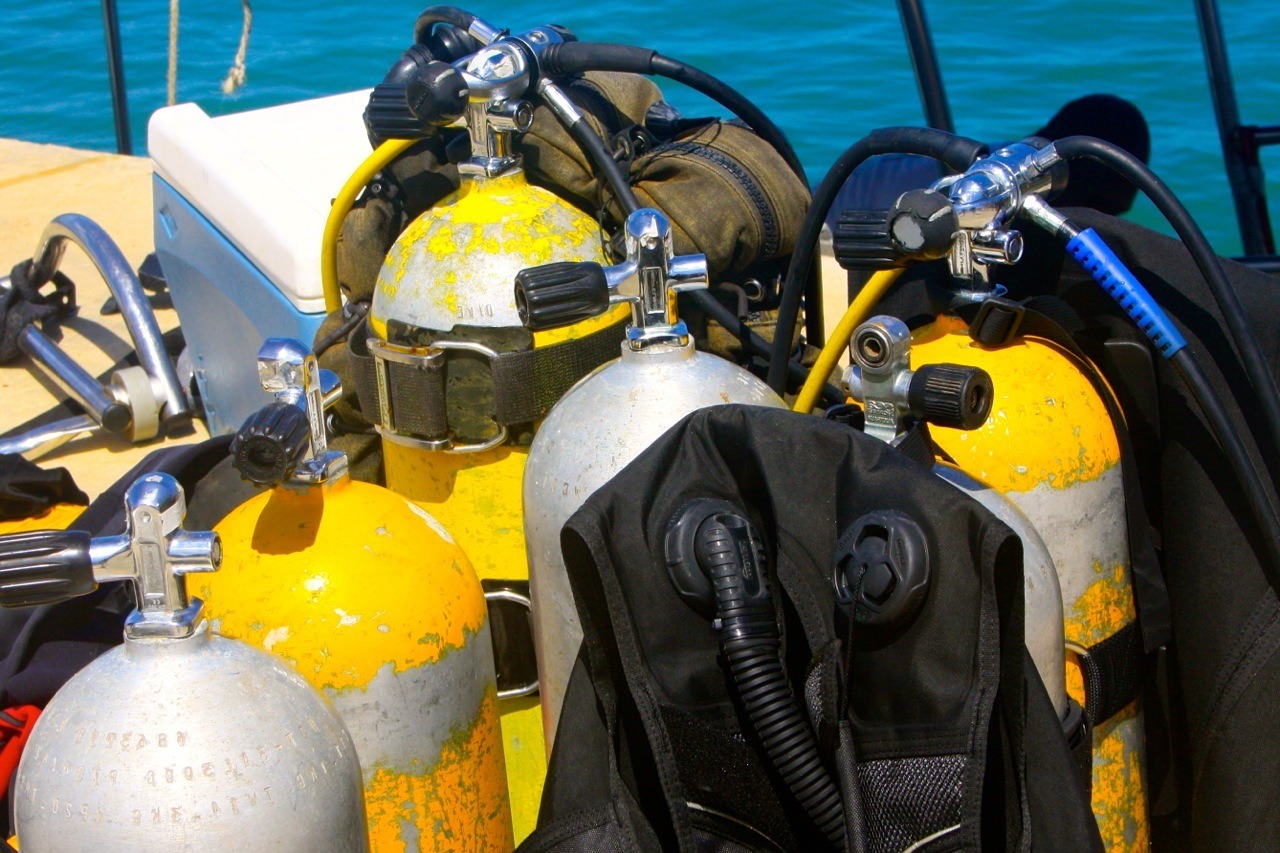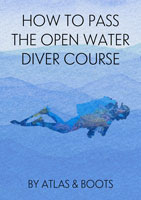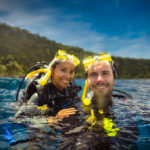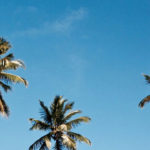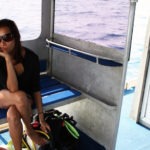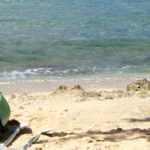I like to think of myself as a bit of an adrenaline junkie, but put me in water and all my bravado dissipates. As a child, I was not a strong swimmer. Fortnightly lessons for a year in primary school weren’t enough for me to find my fins. As an adult, I have improved marginally but I never stray far from the shore.
With this in mind, when Peter suggested booking our first dive, I agreed with hesitance. The idea put butterflies in my stomach – a rare feeling for someone who never gets nervous. As neither of us had dived before, we were warned that the deepest we could go was 12 metres. I looked 12 metres off into the distance – it would be deep enough for me.
Our instructor, Paul, met with us the day before and talked us through the basics: how to equalise the pressure in our ears, how to equalise the air in our masks, how to get water out if it got in our masks. He talked us through what to do if we needed to cough or even vomit.
“Just vomit into the tube. That’s what it’s designed for.”
“I’ll try not to,” I joked, butterflies dancing away. I explained that I had never free-dived before, my body unable to gain enough momentum. Paul told me that I’d have weights to drag me down. Not quite as comforting as I had hoped.
The day arrived and we set off on The Full Boar, Paul’s small white powerboat. We sailed a while until we reached the site of the sunken SS Coolidge. As the wreck was deeper than 12 metres, we would only be snorkelling in this area before moving onto another patch. I had snorkelled once before so was a little bit more confident about it despite Paul assuring me that snorkelling was in fact harder than diving.
Mask in hand, I eased into the water and put on the mask. Hesitant, I took it off again.
“Just put your face in the water,” Paul said from the boat.
“I will when I’m ready,” I replied emphatically, swimming away from the boat so I wouldn’t embarrass myself in front of him. After a while I put the mask back on and eased my head underwater.
Straight away, I could feel water in my mask so shot back up to take it off. This happened three or four times until, finally, I found my groove. This time, still holding the breathing pipe above water so to make sure it wouldn’t dip under, I stayed submerged for a few long minutes. I practised regulating my breathing and staying calm.
“All you have to do is breathe in and out slowly,” Paul had said, and so I breathed. In and out and tried to stay calm. Half an hour later, it was time to go to the dive site. I felt my stomach knot.
Watching other divers flip backward into the water, my eyes widened in concern.
“Don’t worry,” said Paul. “You won’t have to do that. We’ll put the gear on you in the water.”
“Won’t it be heavy?”
“No, it’ll be in the water so it’ll be weightless.”
At this point, Peter patted my arm. “Just think of it like your backpack,” he said.
“My backpack weighs 13 kilograms.”
He paused. “You’re right. I’m sorry. That’s not comforting at all, is it?”
I got in the water, strapped on my gear and then, with encouragement, put in my breathing pipe (regulator). It felt odd and unnatural, like I couldn’t get enough air. I tried to keep breathing, in and out, slowly.
Then it was time for the competency tests, which have to be completed before a rookie dive. The first was diving under water with my regulator out, then locating it by holding my arm back at a right angle and then sweeping it across. Holding my breath, I dipped under water and did it as quickly as possible.
Then, came the real test: submerging under water, taking the regulator out for a few seconds, making sure not to ingest any water, and then putting it back in. We submerged and I took out my regulator. Panic hit me and I started spluttering. Shooting above the surface, I coughed up the water. For the first time in my life, my nerves got to boiling point. I locked eyes with my Paul and said, “I’m not sure I want to do this.”
And I meant it. How was I going to survive under water for 45 minutes? I could barely open my eyes. Paul was amazingly calm like some sort of Zen master.
“If you don’t want to stay down, we won’t, but just try it. It’s really not that hard.”
Heart racing, I paused in indecision then finally nodded my agreement. We did the test again and I barely passed, shoving in the regulator the instant after I took it out. After a few words of encouragement, we submerged, my hand in Paul’s. I focused on breathing, in and out, in and out, slowly. A few metres down, Paul checked that I was okay. I made the okay sign back, not entirely sure that I was.
We followed a rope down another metre or two, equalising as we went. The pressure in my ears was heavy but manageable. At five metres, we paused to adjust to the change in pressure. It gave me time to gather myself, to realise that I was breathing easily and it was, in fact, easier than snorkelling. Paul checked again that I was okay. This time when I signalled back, I think I was telling the truth. Deeper we went, another five metres, a pause and then finally to the bottom.
It was stunning, surreal, amazing – like being on a different planet. Paul stayed close by, making sure I was comfortable. At times, when I started floating up and couldn’t control my body, he reached up to pull me back down, checking that I was okay for air and adjusting my buoyancy. I hit my comfort zone and soon enough was joking around with Peter who was close by but swimming more independently.
We spent a while examining coral and fish and bits of wreckage – and, yes, we did indeed find Nemo. After half an hour or so, it was time to come back up. When we broke the surface, I cried out in triumphant laughter.
“Amazing, isn’t it?” asked Paul.
Still laughing, I gave him a hug. “Thank you for not letting me chicken out.”
He was right: it wasn’t that hard after all, but ‘hard’ is relative – something I’ll remember next time I’m tempted to brush off someone’s fear of heights or fear of flying. Overcoming a fear, no matter how trivial, takes courage and I’m glad Paul had enough for me that day.
Back on the boat, Peter turned to me with a wry smile. “So – shall we do our PADI then?”
I sucked in some air and sat back.
I’m still thinking about my reply.
